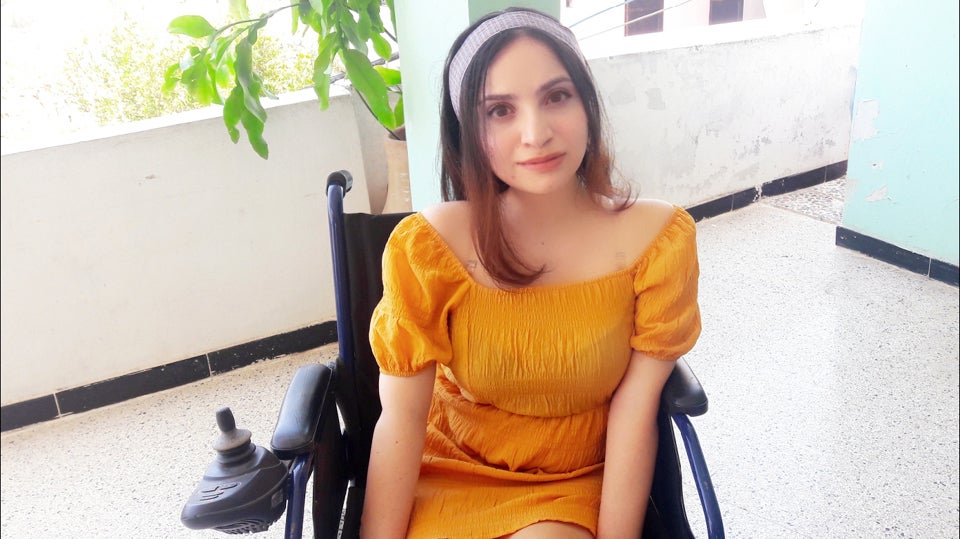Youth blog: Why we need women with disabilities in peacebuilding
Date:
Author: Batool Abuali

Batool Abuali, is a peacebuilder and a youth and social advocate from Syria. Since she was a child, she has lived with muscle dystrophy. As a young woman and as a person with a disability, she has worked to promote equality and inclusion. With a masters in Web Science, Ms. Abouali is the founder of Light Initiative, a non-profit voluntary-based organization supporting people with visual disabilities to access education opportunities and materials in Syria. She is currently participating in the Young Women Peacebuilders Programme implemented by UN Women Regional Office for the Arab States.
Twenty-one years since the adoption of UN Security Council Resolution 1325 (UNCSR 1325) on Women, Peace and Security, women are still excluded from participation in peace and security processes.
Between 1992 and 2019, women constituted, on average, 13% of negotiators, 6% of mediators, and 6% of signatories in major peace processes worldwide. About seven out of every ten peace processes did not include women mediators or women signatories at all.[1]
So yes, at times women have been invited to sit at the peace table, but not always welcomed, and sadly, women with disabilities have not even been considered.
Women with disabilities are not referenced in UNSCR 1325 nor its subsequent resolutions, and those resolutions have not included any measures on whether the gender-specific needs of women with disabilities are being met during or after conflict.[2]
The United Nations is keen to integrate and follow up on disability issues through the adoption of the Convention on the Rights of Persons with Disabilities (CRPD), which has a strong gender focus. However, no one is talking about having women with disabilities in the peace table.
Why should women with disabilities be included in peacebuilding processes?
It is simple:
- Around 15% of the world’s population, around 1 billion people, live with disabilities. We are the world’s largest minority.
- In most OECD countries, women report higher incidents of disability than men.
- Women with disabilities are recognized to be multiply disadvantaged, experiencing exclusion on account of both their gender and their disability.
- Women and girls with disabilities are particularly vulnerable to abuse.[3]
On the other hand, war and conflict increase the incidence of disability in general, and women with disabilities experience higher rates of gender-based and other forms of violence during conflict.
Women with disabilities face unique challenges during and after conflict, which means they can offer unique perspectives and contributions to the peacebuilding process.
It is time for women with disabilities to receive equal opportunities and to be included so they can bring their diverse backgrounds, ideas, needs, perspectives, and skills to the peace table and play their role in formulating and implementing policies that will affect their lives and their post-conflict societies.
What is to be done?
Changes must be made at existing programs, institutions, and mechanisms on both international and national levels to ensure that women with disabilities are systematically included. We need to integrate UNSCR 1325 and other existing policy frameworks to the obligations set out in the CRPD.
We need to identify and address the different barriers to inclusion and provide the necessary support, taking advantage of ICTs to bridge the gap that limits access to women with disabilities, especially in conflict or marginalized areas.
After ten years of witnessing the conflict in Syria and working with hundreds of persons with different disabilities -including myself-, I think there is still much to be done, especially by women with disabilities, and that including us in the peacebuilding process will make a significant contribution in resolving conflict and creating and sustaining peace.
Although men are the often the ones carrying guns, no one knows about conflict prevention and resolution better than women, especially those with disabilities, because we have been in a constant battle all our lives: within our families, our educational and professional systems, and our communities, struggling to achieve our goals of education, peace, and equality.
So, as a woman with a disability, I only need an invitation. I will bring my own vision, and my own chair!
____________________________
[1] Council on Foreign Relations, Women’s participation in peace processes.
[2] Ostoleva, Stephanie. "Women with disabilities: The forgotten peace builders." Loy. LA Int'l & Comp. L. Rev. 33 (2010): 83.
[3] https://www.un.org/development/desa/disabilities/resources/factsheet-on-persons-with-disabilities.html